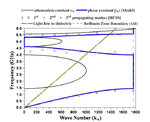JohnFid
Junior Member level 3

Hello, I am trying to implement a periodic cell for antenna design and I want to produce a diagram Frequency Vs Wavenumber in eigenmode. How can I import wavenumber to my design? As I know, HFSS use ko, wavenumber in free space of each mode to calculate resonation frequency. Thank you.


